These days, the word “branding” gets thrown around a lot. Everyone knows what it is: Branding is what makes Apple “Apple” instead of “shiny gadget producer,” “Starbucks” instead of “premium coffee seller” and “Nike” instead of “sturdy running shoes.” That being the case, how do you make it work for you?
To be specific, how do you make customers say “Oh yeah!” instead of just “Oh…” when they hear about your company? How do you create a brand that’s memorable, sustainable and true to your company’s values in an age where branding is harder than ever? How do you build something so powerful from the ground up when you’re still new to business?
Unfortunately, there’s no one-size-fits-all answer to those questions. The best branding strategies depend on a ton of factors: Who your target customers are, what those customers think about you, how comfortable you are with your company’s current image, etc.
Better grasp the answers to those questions when you follow the tips below.
- Write Your Brand Mantra: Keep in mind that your brand mantra is different from your mission statement. For example, Nike’s mission statement is “To bring inspiration and innovation to every athlete,” while its mantra is “Authentic Athletic Performance.” You can think of a company mantra as a three- to five-word answer to these questions:
- Why does your company exist?
- What makes it different from similar companies?
- How can you make that mantra — and, by extension, your company — memorable?
In Nike’s case, their mission statement answers the first question. However, by adding the word “authentic” to their mantra, they also managed to differentiate from their competitors, which simply offer “athletic performance.” Also, the alliterative “As” make the mantra easy to remember, and a clever allusion to batteries (“AA”) as a source of energy.
- Be True to Your Mantra: Your mantra should trickle down to every aspect of your business. For example, if you have a shipping company and your selling point is speed, it should reflect not only in how fast you deliver the goods, but also in the way you handle customer concerns, the way you change according to the needs of your industry, etc.
- Have a Logo: Your company may have a mantra, but it’s not going to be the one that’ll stick in your customers’ minds. Rather, it’s the logo — which you’ll need to have STAT.
Why? Because people remember images better than words. If your company’s posts pop up on your target customer’s feeds, your logo/profile picture is going to be the first thing they’ll notice. Similar to your mantra, your logo is a deceptively simple element that should be conceptualized very carefully.
1stWebDesigner has a great post on how to design logos in 2016, but to sum it up:
- Remember the K.I.S.S. principle (Keep It Simple, Silly). If you can shrink a logo to the size of your fingertip, and people can still recognize it as yours, that’s a good sign.
- Make it different. Even though your logo should be simple, that doesn’t mean it has to be bland. For example, Coca-Cola has a logo completely made up of letters, yet its unique typography makes it stand out. Try to make your company logo simple enough to remember, but different enough to be unforgettable.
- Make it versatile. No matter what color scheme you apply to your logo — black, white, black-and-white — it should still look good. This comes in handy when you have to use your logos for championship matches, trade shows and other public events where you’ll have to make do with differently colored backgrounds.
- Give it a story to tell. Remember the FedEx logo? If you look closely at the space between the “E” and “x,” you’ll see an arrow pointing to the right. The same goes for these 40 companies with hidden messages in their logos, which obviously work as far as their customers are concerned.
Luckily, you don’t have to get a logo perfect the first time. Many large corporations change their logos every few decades or so. What’s important is for it to reflect your company’s values and how those values have changed over the years — hopefully for the better.
- Build Your Social Media Presence: Since people spend a great portion of their time on social media, it’s a great place to attract as many eyeballs as possible. Also, setting up a profile on sites like Facebook is incredibly easy and inexpensive, making it an efficient, cost-effective way to get in touch with your target demographic.
The only thing you need to worry about is getting drowned out by the social media noise. To avoid that, do one or more of the following:
- Use Facebook’s promoted posts feature to boost the visibility of your posts.
- Write attention-grabbing headlines to get your customers to click (e.g. “How to Save $1,000 in Three Days”).
- Make your posts pop with beautiful, relevant images.
- Cross-post across your social media channels.
- Repurpose old yet evergreen posts. For example, if you had a “How to Prepare an Awesome Thanksgiving Dinner” last 2015, you can promote it again, and make a few tweaks to keep the post updated.
Keep in mind that social media is a two-way communication tool. Don’t be afraid to engage your customers by responding to comments, sharing their positive posts about your company and promoting posts from related, non-competitor companies. Always add value to any conversation, whether online or offline, and it’ll be easier to attract loyal, paying customers.
- Build Your Target Demographic
Before you try to be “all things to everyone,” think about what your ideal buyer is like. Is it a young, hip person who has loads of cash to spare? Or is it a senior citizen who prefers to keep all the dollar bills close to their chest, so to speak?
Focus on grabbing a large chunk of your target buyers’ population first. This way, even if expanding to other markets doesn’t work as well as you want it to, you can count on your core market to keep your profits healthy.
Over to You
These tips may be simple, but it’s important not to skip them. Execute them in the best way you can, and if you ever need help or guidance, remember that Pink Studios is always here to help you with community management, editorial calendars, promoted posts and so much more. Contact us now and let’s elevate your business’ success today!
Lexie Lu is a designer and blogger. She actively contributes to the design world and usually has a cup of coffee in close proximity. She writes weekly on Design Roast and can be followed on Twitter @lexieludesigner.


